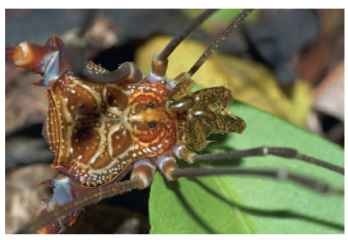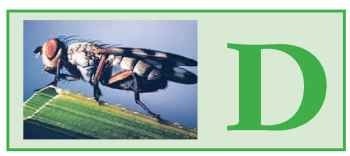Opiliones, commonly known as daddy-long-legs, harvest-men, shepherd spiders, or harvest spiders (among many other names), are a very interesting group of arachnids well known by farmers. They constitute the third most speciose arachnid order [after Acari (mites and ticks) and Araneae (spiders)], comprising approximately 1500 genera and 5000 described species in 45 families. Together with mites, daddy-long-legs are the only arachnids that ingest vegetable matter, but generally they prey on insects, other arachnids, snails, and worms and have the ability to ingest particulate food; this is unlike most arachnids, which ingest only liquefied substances.
Opiliones are divided into four suborders: Cyphophthalmi, Eupnoi, Dyspnoi, and Laniatores.
DESCRIPTION
Daddy-long-legs present all the typical characteristics of arachnids, with the body divided into two regions, cephalothorax (or prosoma) and abdomen (or opisthosoma), although these two regions are not clearly differentiated, giving daddy-long-legs the aspect of “waistless spiders.” The cephalothorax generally has a pair of median eyes on top of an ocular tubercle. The eyes are simple, that is, not compound as in insects and crustaceans. Although many cyphophthalmids (or mite harvestmen) lack eyes entirely, others have a pair of median eyes that have migrated to a lateral position. The cephalothorax also bears a pair of chemical-secreting organs, known as repugnatorial glands.
The cephalothorax has one pair of chelicerae for manipulating the food particles, one pair of palps of either tactile or prehensile function, and four pairs of walking legs, enormously long in some Eupnoi and Laniatores species, surpassing 15 cm in some cases. The palps of most Laniatores are relatively large, and most have two rows of spines acting as a grasping organ. The second pair of walking legs is sometimes modified and acquires a tactile function.
Another distinctive characteristic of Opiliones is that the females have a long ovipositor with sensory organs on the tip that are used to check the soil quality where they will lay the eggs. Except for some mites, similar organs are not known for any other arachnids. The males have a penis or spermatopositor organ, which may be muscular or alternatively operated by hydraulic pressure. Copulatory/spermatopositor organs are also unique among the arachnids, again with the exception of certain mites. Fertilization is by transferring a spermatophore or internal and direct (unlike in spiders, which use the palps for the indirect internal fertilization).
LIFE HISTORY AND BIOLOGY
Opiliones are oviparous and deposit between one (in cyphoph-thalmids) and several hundred (in phalangiids) eggs. Life cycles and longevity are variable. Many species live less than 1 year as adults, with embryonic development occurring during the winter, hatching in the spring, and reaching maturity in the fall, after five to seven molting periods. This is the typical seasonal life history of most Northern Hemisphere phalangiids. Others have an overlap of adults and juveniles throughout their life cycles during the favorable seasons, dying in the winter. Finally, cyphophthalmids and most laniatorids live several years, with cases recorded up to 6 years.
Sexual dimorphism is evident in some species. Males of the family Monoscutidae have enlarged chelicerae. Some Laniatores families have males with enlarged palps. All cyphophthalmid males have a spur on the tarsus of the fourth walking leg. This structure, named an adenostyle, possibly secretes a pheromone. Some Cyphophthalmi species have male anal glands or sternal glands, and the pettalids may have extreme modifications of the male anal regions.
Opiliones are generally small to medium in size (body measuring less than 1 mm to almost 2.5 cm in the European species Trogulus toro-sus), inhabit all types of moist-to-wet habitats, and occur on all the continents except Antarctica. The Laniatores include the large (up to more than 2 cm) and the most colorful Opiliones (Fig. 1), and their distribution reaches a peak of diversity in tropical regions and the Southern Hemisphere. The Dyspnoi inhabit mostly the Northern Hemisphere while the Eupnoi are more widely distributed, but especially abundant in the Northern Hemisphere. Finally, the Cyphophthalmi are distributed more uniformly worldwide, but are the smallest (down to 1 mm) and most obscure of the Opiliones.

FIGURE 1 Goniosoma longipes, a colorful neotropical harvestman of the family Gonyleptidae that exhibits parental care.
No Opiliones are harmful to humans, and they do not contain any type of venom or other substance. Some Opiliones are reported as highly poisonous, although not having the capacity of biting humans. This myth seems to be a confusion with the highly neurotoxic venom of some spiders. These are differentiated from Opiliones by the presence of a waist that separates the prosoma from the opisthosoma, among many other characters. In fact, Opiliones are supposed to be beneficial, and they are good indicators of undisturbed environments.

